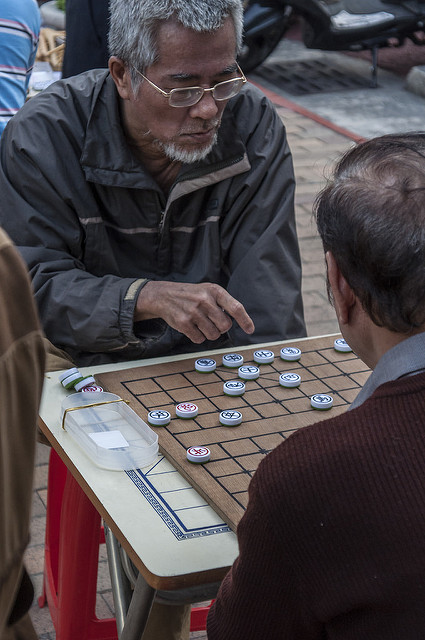
THE THINKS YOU CAN THINK
I’ve just read Nobel prize-winning psychologist Daniel Kahneman’s book, THINKING FAST AND SLOW, which is a summary of Kahneman’s lifetime study on how the mind works.
Kahneman, now in his 80’s, has been called “one of the world’s most influential living psychologists.” His work – which includes things with names like prospect theory, loss aversion, anchoring, separate mental accounting, the representativeness bias and the availability bias — has helped to shape and continues to influence the field of behavioral economics and finance.
For laymen, the book lays out Kahneman’s insights about two often-conflicting systems we humans use for making decisions. The book is written in a clear and engaging style that led to the book becoming an international bestseller in 2011.
I’ll probably go back to read this book several more times. It’ll be a reference book for me, sitting on my shelf.
THINKING FAST AND SLOW is one of those primers that is just chock-a-block full of useful insights that can be applied to regular living. It’s worth more than one visit.
THE TWO “SYSTEMS” OF THOUGHT
In his book, Kahneman builds mind-constructs that delineate and explain the two main ways we humans use our minds to decide how to move in the world. These constructs are based on work from the decades-long collaboration he maintained with another brilliant psychologist, Amos Turyev, whose focus of study was decision-making and judgement. Turyev died in 1996 at the age of 59.
Kahneman sticks labels that he got from psychologists Keith Stanovich and Richard West on the constructs – System 1 (the automatic system) and System 2 (the effortful system).
As Kahneman explains them, these systems each have inherent strengths and weaknesses. They are available to us at all times. If we can learn how to work with both of them, then we’re likely to reach better decisions than if we rely only on one or the other.

GOING ON AUTOMATIC PILOT
System 1 operates with little or no effort. It’s sort of like breathing. You don’t need to call it up and you don’t have to pay any attention to it.
System 1 is always there, at the ready for action, and it is lightning-fast.

With that story, we can make up ways of walking and directions to take. We can create new things, evoking a Something out of the possibilities that present themselves because we have and believe that story.
This is cool and all, but there does happen to be a downside to it.
With System 1 running, we see what we see, throw in memories of old lessons learned and mix in assorted hints and rumors and allegations we’ve heard from someplace or other to build a logical sort of a story that becomes a platform from where we can launch off in some direction or other.
Kahneman likes to call the underlying mode of this system by the acronym WYSIATI for “what-you- see-is-all-there-is.”

In our almost-immediate story-creating, we do tend to ignore sometimes-critical information. After all, if we can construct a logical story from the information we have, why bother to see new facts, figures or ideas? Right?
Rebel-psychiatrist R. D. Laing once famously said, “If I don’t know I don’t know, I think I know. If I don’t know I know, I think I don’t know.” (Read that again. Like much of Laing’s work, it’s confusing but it does make sense.)
The fact that we are so prone to take things at face value does have a bearing on the problem with just running with System 1. When it comes to making decisions, we can be fearless in our ignorance.
In the absence of detailed, accurate knowledge we can construct stories that support our beliefs and act on those beliefs with a confidence that can border on insanity.
Using System 1, you can effortlessly form impressions and generate feelings that can be used to build complex patterns of ideas that engage your interest and influence your decisions. You can even react to a threat before you recognize that it is one. (Sometimes you’re even right.)
The one fly in the soup is this: System 1 is radically insensitive to both the quality and the quantity of information we hold. All it looks for is a coherent, believable story.

That can be a problem.
Very often in our System 1 parkour-style free-running through life, we neglect to suss out the big drop on the other side of the low wall we’re jumping over and…ouch! Street-pizza happens.
[This awesome 2018 YouTube video, “Late For Work – Parkour Run,” was published by urbanamadei. I figured we needed a break from all the heavy-duty thinking.]
WORKING ON THROUGH SYSTEM 2
Kahneman calls the conscious and deliberative System 2 thinking “effortful.” It is neither automatic nor is it easy.
You would be likely to tap into System 2 thinking when you’re trying to solve one of those durned word puzzles on a math test. Very often these riddles are tricky. The first answer that comes to mind is probably not going to be the right one.
Here’s a cute animated YouTube video published in 2017 by funza Academy, “The Bat and Ball Problem That 50% of Harvard Students Got Wrong.”
As the video points out, we really have to push ourselves to get into the process of System 2 thinking. The mental work involved is deliberate, effortful and orderly.
If you are really grinding on a complex problem, even your body gets involved. Your muscles tense up, your blood pressure rises, your heart rate increases. Your pupils dilate. You stress. It doesn’t stop until you either solve the problem or you give up.
Only the slower System 2 thinking can construct thoughts in an orderly series of steps. To activate it and use it, you do have to pay much more attention to what you are doing than when you use the automatic System 1.
Think of an American driving in Europe for the first time. There she goes, driving down what she totally feels is the wrong side of the road. You’d better believe she is paying strict attention to what she is doing, especially if that road gets busy.
The other thing System 2 can do, Kahneman says, is to overrule the freewheeling impulses and associations of System 1.
System 2 goes into action when you need to control yourself. When you’ve already made a mistake because of your inattention that requires fixing, you’ll reach for the System 2 thinking. When you need to be logical and rational, System 2 will be there on-call.

Also, when System 1 runs into difficulty, when tried-and-true solutions to some problem does not work or when you encounter a question for which you have no answer, System 2 can be mobilized to look for new solutions and for better answers.
The biggest problem with System 2 thinking is the urge to keep looking for one more factoid, one more factor, or one more aspect or angle. You can get so caught up in analyzing and philosophizing that you forget to get up off your behind and start doing.
“Paralysis by analysis” sets in and you need to call in System 1 thinking to cut to the chase.

You take all your new insights and information from the System 2 thinking and you build another story using the System 1 thinking. Then you go.
The following YouTube video, published by The Commonsence in 2018, presents some thoughts on how to work with both of the systems in day-to-day living.
FINAL THOUGHTS
Knowing fast and slow thinking are a part of your mind’s toolbox means that you’ll be able to use them appropriately as needed, it seems to me.
I do recommend Kahneman’s THINKING FAST AND SLOW. It has a plethora of insights and ideas that can help you understand about how you are thinking and why you do that. It can also help you direct your course corrections more consciously.
One thing that Kahneman does not emphasize in the book is the part where you take all the insights you’ve worked so hard to gather using the System 2 explorations and figure out how to sink that new knowledge down into your bones so that the insights become a more permanent part of your System 1 story-making.
That one is the result of doing, repetition and deliberate practice — something athletes, martial artists and Makers of every stripe know is necessary to develop mastery. And that’s a whole other story….

SLOW THINKER LAMENT
This is irritating!
In a world of fast thinkers and pyrotechnic wizards,
Here I am…
Stuck with a mind that dives deep
Looking for crystal caves and other wonders
Under all that surface stuff.
In the alphabet soup of life,
How come everybody else is already
Moving past the letter ‘g’
And I’m still stuck on ‘c’?
This is NOT satisfactory!
They’re doing shrimp tempura,
Gobbling down the pupus, one and all.
Me, I’ve got a kalua pig in the imu.
Pfui!
What’s up with THAT!
By Netta Kanoho
Header photo credit: Decisions 3 by Justin C via Flickr [CC BY-NC-ND 2.0]
……
SOME OTHER POSTS TO EXPLORE:
(Click on each of the post titles below and see where it takes you…)
……
Thanks for your visit. I’d appreciate it if you would drop a note or comment below and tell me your thoughts.
30 thoughts on “THE THINKS YOU CAN THINK”
Definitely an insightful post.
The quote “If I don’t know I don’t know, I think I know. If I don’t know I know, I think I don’t know.” had me stuck on this page for at least 10 minutes thinking about what it actually meant but I still don’t really quite understand it.
Does it mean that if I have no idea about what I don’t know, then I think have the knowledge of all that I should know, but if I don’t know that I have a particular piece of knowledge when I do, I will think that I am missing something because I know something is there and I should know it, but I thought I don’t have it when in fact I do?
Okay that’s turning me in circles too. Let’s stop here (unless you can understand what I had just typed) for now.
Another point is the fast vs slow thinking part: as we know, students nowadays are stuck in a curriculum where they are required to process thinking both quickly (as they are given a time limit in tests and exams) and logically/accurately (which determines their answers and of course, their grades as well).
Just a thought, do you think this actually impedes their ability to slow down their own thinking on other problems that they encounter on their life but have not met it prior to the encounter, and hence missing out on crucial details or unable to think as wholesomely as a slower thinker?
Hey Rachel:
Thanks for your visit and for sharing your thoughts.
You got the idea behind the quote exactly right, I think. Good job!
Myself, I think that the slow-thinking thing does require both time and the space (as well as inclination) to do well. It is another natural function of the mind, so it seems to me that it is likely to kick in when it is needed.
The problem is that if we don’t allow ourselves the time and the space to do the slow-thinking and if we are not patient enough with the process, it is likely that we won’t be able to do it as well as the other, fast-thinking mode and we will not benefit from the slow-thinking mode as much as we could.
Probably, we’ll jump back into the fast-thinking mode which will get us into more problems that we’ll need to untangle ourselves from.
Eventually we’ll be so tangled up that we have no choice but to sit still long enough to let the slow thinking do the work it needs to do so we can get ourselves out of the mess we’re in.
It’s sort of like facing a giant tangle of fishing line that has to be sorted out before you can go fishing. If you haven’t got any more line and you really want to go fishing, you just have to sit there and untangle the mess.
Please do come again….
Such an insightful post. I had never heard of Dr. Kahneman, but I have read a bit about the concept.
As I was reading your page I began to think of a couple of men I know who think they are the smartest person in the room-in any room. They are patronizing and annoying, but they never see it. They literally order me around like I’m their own mother.
I appreciate your insights into this subject. You made it fascinating.
Hey FTN:
Thanks for your visit. I know some people who are like that. They sure are annoying creatures!
I’m glad you enjoyed the post. Please do come again.
This is so interesting! There have been times in my life where I can feel myself shift from System 1 to system 2. It’s a little like hitting a wall!
I also get quite irritated when I do something I think is correct, and it turns out to be wrong and someone says, “If you don’t know, ask!” Because I “didn’t know I didn’t know” so I thought I knew!
Thanks for the visit and for sharing your thoughts, CJ. I love the thing about “asking” when you didn’t know you didn’t know. That is just so-o-o-o true!
Please do come again.
Thank you once again for the amazing post! You never cease to amaze me with your ability to strike deep into the human psyche and teach some of the most important things of life!
I really like what you posted today, because it goes right with what I learned in college, as a psychology major! It is so true that we have a part of our brain that works on a complete automated function, but we also have a part that works on a more effort type plane!
One of the things I have learned through QiGong is that effortful thinking can help us achieve our goals!
Thanks for the visit and for sharing your thoughts, Jessie. I’m glad the post resonated with you.
Please do come again.
Hi, this is a fascinating article and topic. I have always been very interested in human thought. It is quite interesting.
The ability to think about past and future is what has made man the king of the food chain. No other animal can do that. Naturally humans can use their thoughts for contemplation and manifestation.
This has evolved over thousands of years. Humans can say many thousands of words, and animals can only say a few.
Jake, thanks for your visit and for sharing your thoughts. It is a truth that the abilities of our minds do make us interesting critters to watch, I say.
Please do come again.
When I looked at the photo in the cafe I made up a completely different story than the one the photographer told. Interesting how we do that, but I had only what I saw in the photo. We do judge or make up our minds easily though, that’s one thing I learned from this little picture story telling exercise.
I am not sure how much I understand from system 2, but system 1 is perhaps the better or less complicated way of thinking?
I read the quote ““If I don’t know I don’t know, I think I know. If I don’t know I know, I think I don’t know” three times until I finally understood it, at least I hope I did.
Christine, thanks for your visit and for sharing your thoughts. Isn’t it funny how easy it is to misinterpret a scene and make up a (wrong) story? I find it fascinating!
System 2 is just your basic analytical mind. You own it, and it works for you, but not as automatically as the System 1. Neither is better than the other. It just depends on the situation you’re in and what you want to accomplish.
System 1 is just made up of all the stuff you’ve tried before (over and over again) that worked so you go back to the tried-and-true and it is less effortful. It’s like a default setting on a computer, I think.
That quote tripped me out too!
I am so pleased you played with the ideas presented in the post.
Please do come again.
Hello NETTA:
I find your article both profound and ambiguous.
I have always wondered about the order of thinking of humans, to find the motivation that drives our choices of action throughout our lives.
The education received at home and by society does it necessarily make us predisposed to certain statesmen? Would you help me find answers to my questions since it seems I find in your articles a beginning of light.
Thank you.
Moi MOI, thank you for your visit and for sharing your thoughts. I am not sure about what you are asking since I am not sure what statesmen you are talking about.
I do know that all of our life-experiences affect how we look at the world and the way we make judgments, decisions and stories about life and the people around us.
What education at home and by society seems to do is present us with a way of seeing the world that maybe doesn’t really work well for us. Every time we try to do what we’ve been taught, things do not go well for us.
It is, I think, up to each of us to really look at how we are making our judgments and decisions and find the ways of walking that work for our own selves. It is really the first step to building our own stories and our own truths.
I hope that helps some.
Please do come again.
I love the sentence of the rebel-psychiatrist R. D. Laing. I have to admit I had to read it out loud two times to get it 🙂 But then it was like a sparkle! Brilliant!
It seems the book is worth reading, I’d like to see some more examples and stories there.
When I was reading your review, I’ve just remembered another great book of Shawn Achor “The happiness advantage” which is one of the best books I’ve ever read. Do you know it?
As to the slow thinking vs fast thinking, do you think it’s good to take time for decisions and analyse everything thoroughly or decide quickly based on your intuition?
Lenka, thanks for your visit and for sharing your thoughts. I appreciate it.
I, too, loved Laing’s sentence. Whew! What a mind-twister.
I do love Achor’s THE HAPPINESS ADVANTAGE. It’s sitting on my shelf smiling at me. One day I’ll actually get to writing a post about it.
I think that slow and fast thinking are just part of our mind’s toolbox. You use a hammer when you want to slam a nail into a wall; you use a screw-driver when you are trying to get that durned thing to get in there.
You use the tool that is appropriate for whatever you want to do. Both hammer and screwdriver help to drive things into a couple of bits of wood. Using a hammer to pound in a screw doesn’t work so well. Neither does using the screwdriver on the nail.
Both are good for what they do well, I think.
Please do come again.
Thank you for your answers.
I’m happy Achor’s book is one of your favourite ones too. It is a book everyone should read, in my opinion.
I’ll definitely add your site to my favourites, your way of thinking feels close to mine.
Thanks, Lenka!
This article has left me thinking and I’ll have to take a look at Kahneman’s book. I had arrived to a similar conclusion, that there were two systems, and when I start reading how these systems worked, I immediately clicked with the explanation.
Being out of balance in our use of one of the systems over the other, can land us in serious difficulties. We must use the correct one for each occasion.
Ann, thanks for your visit and for sharing your thoughts. I do agree that we really do need to sort out which system to use when and it’s good to understand the powers and the limitations of each one so that we can use them more effectively in our lives.
Please do come again.
When I came across the question of the bat and the ball I immediately jumped with the wrong answer. Yes, we tend to be over confident about our intuition in daily life. And it’s when our system 1 has failed, that we reorganize ourselves and start using system 2.
Thank you very much for this post. I liked it very much! Food for thoughts!
Abel, thank you for your visit and for sharing your thoughts. I am glad you enjoyed the post.
Please do come again.
The content flows well because everything is in the appropriate place and it is very easy to read- the less huge chunks of text, the better I feel. The design is very consistent throughout.
There is no messing around here, just the information that they want to convey presented in the simplest way possible.
People with no technical back ground would definitely appreciate the simplicity and ease of navigation in this site.
The layout is very clean, but also kind of simple. It makes you feel comfortable with the site because you don’t feel overwhelmed by information.
The color scheme is effective but should be used more around the site so you can show it off and also liven up the site.
It is extremely easy to navigate this site because all of the links are easy to access, which is excellent.
Well done.
Vasilios, thanks for the visit and for your thorough feedback on the site. I do appreciate it.
Please do come again….
Wow, this was a really fun mental exercise to consider the theories that Kahneman and Turyev have shared. It is good to be aware of the things we know and don’t know, but also to not be deceived by our own perception of where we may be on that scale.
Thanks for the video link – I am looking forward to watching that too and learning even more!
Thanks for your visit and for sharing your thoughts, Aly. I am so pleased you enjoyed playing with this.
Please do come again.
Great read…loved the Late for Work video.
I really liked that System 2 will keep you polite when you’re angry.
I’m glad you enjoyed the post, Ron.
Please do come again!
I’ve read reviews and summarizations of this book and it has had a significant influence on my personal views. I’ve been taken aback in the past when I noticed that someone was “assuming the worst intentions of others,” and I’ve struggled to understand how someone could develop such a distinct narrative in their head…
I’ve been surprised by the biases, prejudices, and “quick judgments” I’ve witnessed in others, especially these days and we are in a cancel culture where if we see someone committing mistakes on social media, it’s easy for some people to quickly judge and cancel them without hearing their side. Thinking Fast and Slow has helped me see these tendencies and judgments in a new light.
I think you’ve pinpointed the major drawback with System 1 fast thinking thing. It is most effective when dealing with things like taking fast curves on a Nascar track, ninja moves in the middle of a sparring match or other feats of derring-do that involve physical movements and body things.
Decisions that require heart, mind and spirit (and especially those that involve and encompass other people and their worlds) do need a bit more time to process.
Thanks for the visit and for sharing your thoughts, Martina.
Please do come again.